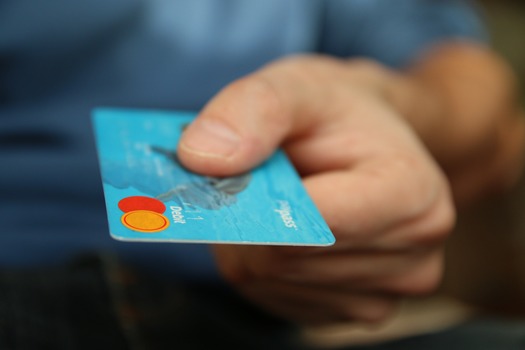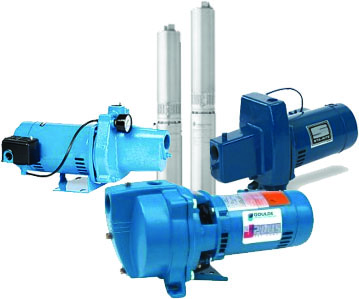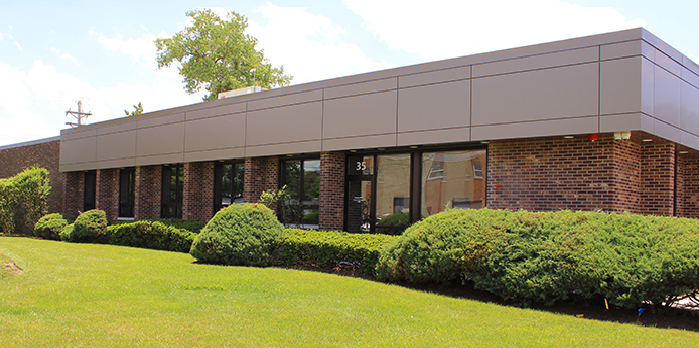-
Buying a New Pump? What You Should Know
June 30, 2016When something is wrong with your pump, there will be signs. Maybe you’re not receiving enough water pressure or maybe there’s no water at the tap at all. Maybe you can hear strange noises emitting from your pump or it sounds as if the pump is running constantly. It might be time to buy a new pump. Shopping for a new pump can be a daunting enterprise. The sheer variety of pump types, pump specifications and the many different applications that a pump can be used for can provide a dizzying amount of information to wade through. Doing your homework before making a purchase is absolutely essential to ensuring that you get the best possible pump to suit your needs. “Sometimes equipment just wears out or is defective, but a lot of problems that customers experience could be avoided by knowing the right specifications before buying,” says Pump Products technician Matthew Carr. The technical experts here at PumpProducts.com recommended these basic steps to guide people through the research process. Follow this guide to make an informed purchase. (more…)
-
How To Use Pump Tags to Identify Your Pump
June 30, 2016This video demonstrates how to use pump tags to gather the necessary information to find out what type of pump you have. Pump tags will give you basic information such as the manufacturer, model number, horsepower and voltage. This information is absolutely critical if you need to replace a damaged pump. If the pump tag is degraded or illegible, try calling the experts at Pump Products at 1800-429-0800 for assistance.
-
Pump Express Services Booster Pump Control Panel Installation
June 24, 2016Pump Products sister business Pump Express was recently called on site to replace a failed booster pump pressure control panel in a commercial office building in Jersey City, NJ. Pump Express service technicians replaced the failed control panel with a new Duplex NEMA 1 control panel equipped with a low suction alarm and cutoff. Pump Products is a stocking distributor and national service center for the world's leading manufacturers of industrial pumps and pump parts. Through our determined and factory trained professionals, we are able to provide our customers with the most innovative and cost effective products on the market today. Whether you need system advice, pump parts or a new pump, our dedicated pump experts will be able to help you with even the most complicated pump system issues. With over 500,000 sq ft of fully stocked warehouse space, we are able to ensure quick delivery times. Phone: 1-800-298-4100 Web: pumpproducts.com
-
How To Calculate Total Dynamic Head For a Pump
June 23, 2016In this video we will be discussing how to calculate TDH or Total Dynamic Head. TDH is the total amount of system pressure, measured in feet, where water can flow through a system before gravity takes over. Put simply, you need the TDH in order to correctly size out your pump. To Calculate TDH we need to know 2 variables: 1) The vertical rise measures the vertical pipe in feet 2) The friction losses: The loss of flow in a system due to friction created by factors like: pipe type, size, fittings, horizontal runs of pipe, etc. 1. To calculate the vertical rise, you need to determine how many feet your water will have to travel upwards before gravity takes over. Simple take the lowest point the water sits and subtract it from the highest point 2. To determine the friction losses: First, acquire your flow rate in GPM. Once you know that, you can add the vertical and horizontal piping lengths of your system to the equivalent length of fittings in feet. Each type of fitting has an equivalent value measured in feet; refer to your preferred manufacturer’s friction loss chart for these values. Now, take the sum of the total length of pipe (including fittings) and divide it by 100.00. (As per 100 ft. of pipe) Next, you need to determine your friction loss multiplier by using the following information: • Type of piping • Schedule of piping • Diameter of piping • Required flow rate Once you have this, use a reference "Friction Loss Chart” from your favorite manufacturer to determine the friction loss multiplier. Finally, plug all your variables into the following formula and you’ll have your answer; [Total Length of Pipe (With Fittings)/100] X Friction Loss Multiplier = Total Dynamic Head In summation: To size and buy the correct pump for whatever application, you need to know your required GPM and your required TDH. By following the steps above, you should have no problem choosing the pump that’s right for you.
-
Five Telltale Signs You Need Well Pump Service
June 21, 2016Over 43 million Americans still get potable water from a private well according to a U.S. Geological Survey study - roughly 15 percent of the population. The well pump is thus one of the most important day-to-day tools for many Americans and well pump service is a critical need. The responsibility for maintaining a private well system thus falls to whoever owns the property the well is situated on. It can be a headache for a private homeowner with no technical expertise to understand and address maintenance issues as they crop up. Well pumps come in various types: shallow well jet pumps mounted above a well use suction power to create atmospheric pressure that pushes water up from a source no more than 25 ft. underground. Deep well jet pumps, for pumping from a source more than 25 ft. underground, place the jet mechanism at the bottom of the water source; the jet pushes and pulls water in a circulating motion through a two-pipe system. In a submersible well pump system, the entire body of the pump is placed underwater and pushes the water up the well instead of using suction. These compact pumps are generally more efficient and reliable than older jet pump models. Each type of well pump has its strengths and weaknesses, but they all require consistent maintenance. People who get their potable water from municipal systems probably have the luxury of not thinking about pumps. If you draw your potable water from a well, you must remain vigilant about the problems you could face. That means being watchful of certain symptoms that could indicate your well pump might need maintenance or replacement. The following are some of the most common symptoms that cause customers to consult Pump Products technicians. [This post is meant to be a basic overview. It is not a comprehensive how-to manual or a call to poke around in your system. Please do not hesitate to contact the trained professionals at Pump Products to directly address specific issues. It is recommended that all electrical work be handled by a qualified electrician.] (more…)
-
Goulds J7S Shallow Well Jet Pump Buyers Guide & Review
June 14, 2016PumpProducts.com is a leading online retailer stocking the Goulds J7S Shallow Well Jet Pump. This product highlight will explain the design, specifications and key features of this J Plus Series. The Goulds J7S is ideal for use in transporting well water in homes, farms, cottages and with booster services. A 3/4 horsepower power is close-coupled to the volute in an all cast-iron construction. it is built with a one and a quarter side suction and one inch top discharge. The pump measures in at 18 and quarter by 9 and seven-eighths by 8 and three-quarters inches. The tubing allows water to be moved to the pressure switch, which comes preset at 30 to 50 PSI. The Goulds J7S Jet Pump is ideal for the following uses and applications: 1) homes 2) farms 3) cottages 4) With booster services Features and Specifications: 1) A 3/4 HP 115/230 volt single-phase NEMA standard motor 2) 2 compartment motor allows easy access to wiring and other replaceable components. 3) After initial priming, pump can re-prime itself 4) Volute is corrosion resistant cast-iron construction 5) FDA compliant glass-filled Noryl impeller 6) Back pull-out design, adapter nozzle clean-out plug and easily removable parts allow for simple service without disturbing the piping. 7)An integral shallow well adapter eliminates the need for an external adapter. Performance: 1) The pressure switch is preset at 30 to 50 PSI with a maximum shut off pressure of 70 PSI. 2) A maximum capacity of 21 gallons per minute and a maximum total dynamic head of 161 ft.
-
Pump Products Expands Brick-and-Mortar Locations
June 8, 2016PumpProducts.com, a national online distributor of pumps and motors, is expanding its brick-and-mortar operations with a new state-of-the-art building in Westwood, New Jersey this summer. “This new, additional facility will be a one stop shop for all your pump and motor needs, from purchase to service and repair,” says PumpProducts.com General Manager Ed Drejman. The warehouse will comfortably house an expansive inventory of products. PumpProducts.com carries all types of pumps - well pumps, sewage pumps, sump pumps - that can be used for a wide variety of residential, commercial and industrial applications. A treasure trove of repair parts, control parts (e.g., alarms or timers) and other accessories will be immediately available to customers. The increased inventory will help people across the country get products faster. When ordering a product directly from a manufacturer, customers are often at the mercy of a fickle factory schedule. PumpProducts.com can better respond immediately to customer emergencies. A man in Arizona with a broken circulator pump can order a new one from their online catalog and it will be shipped overnight. (more…)













